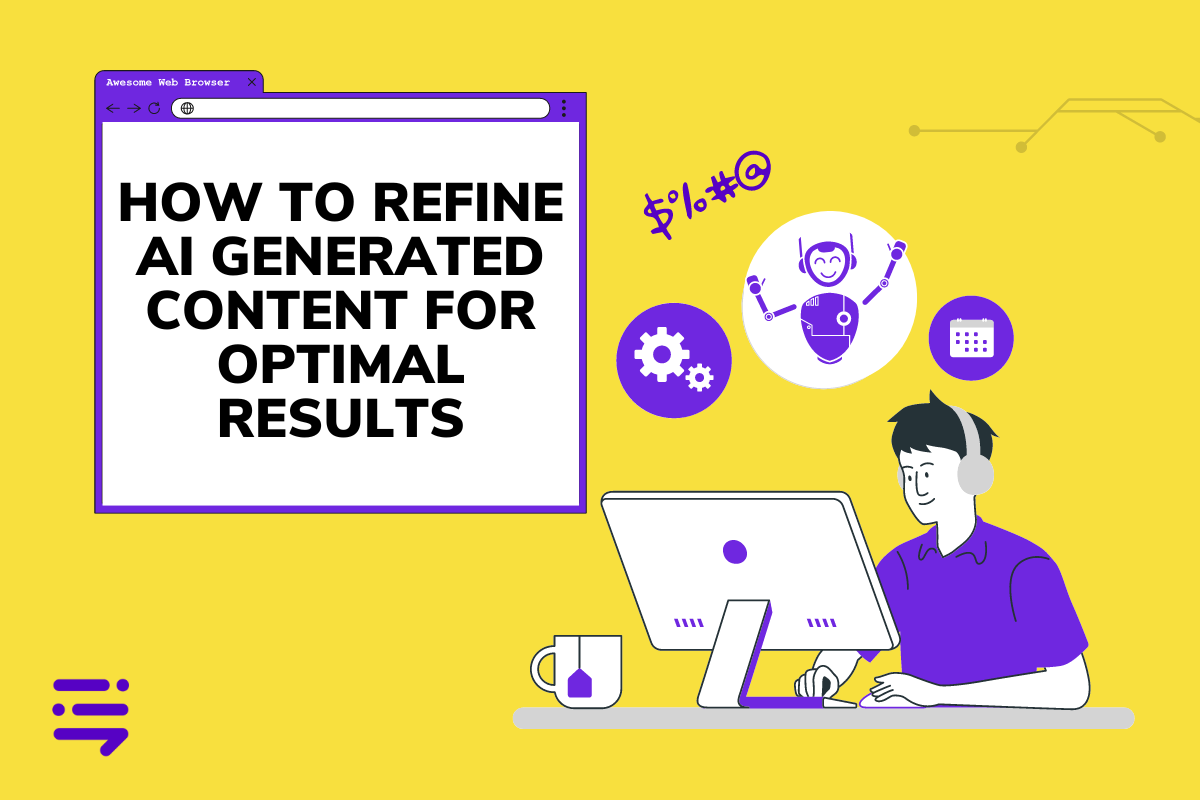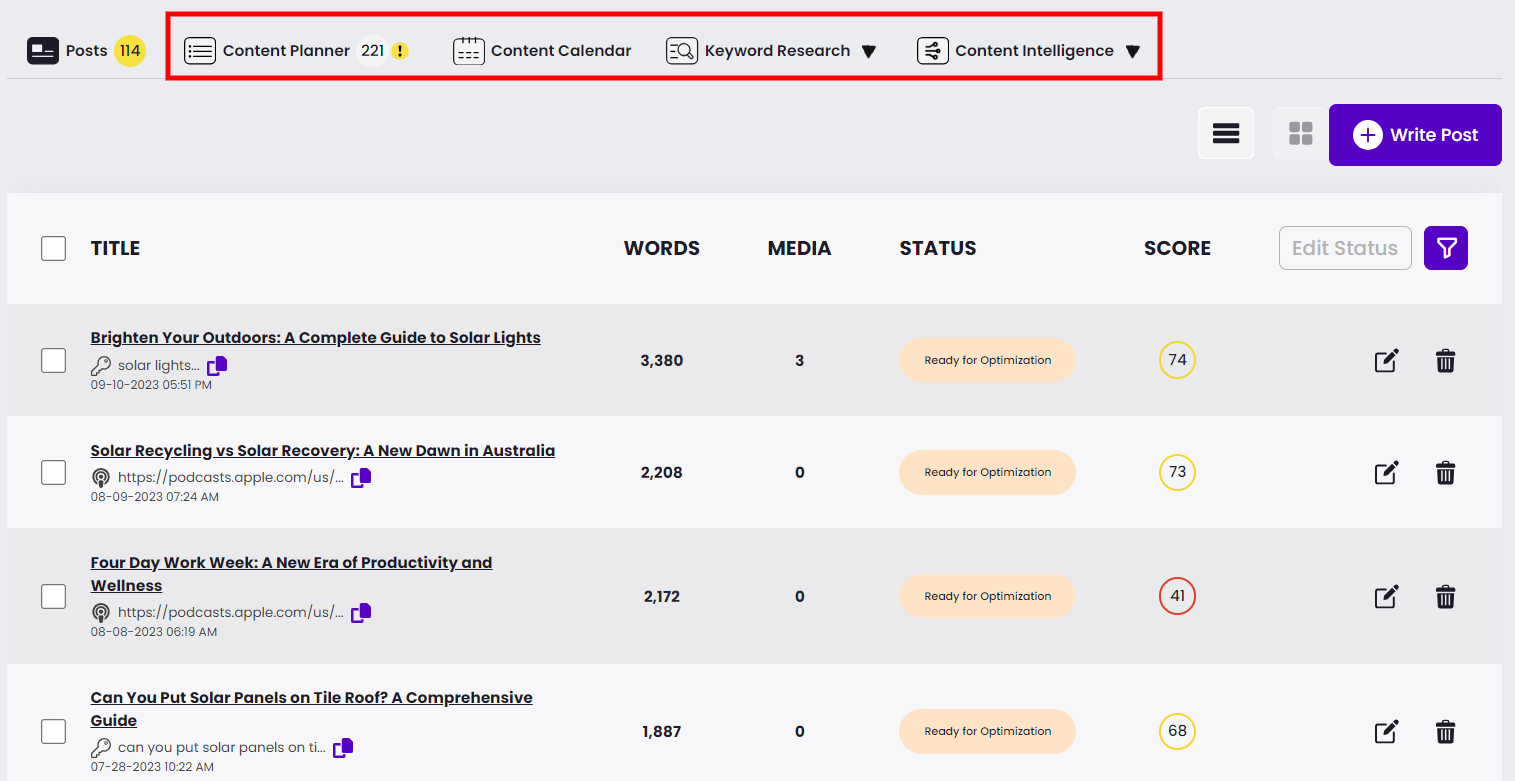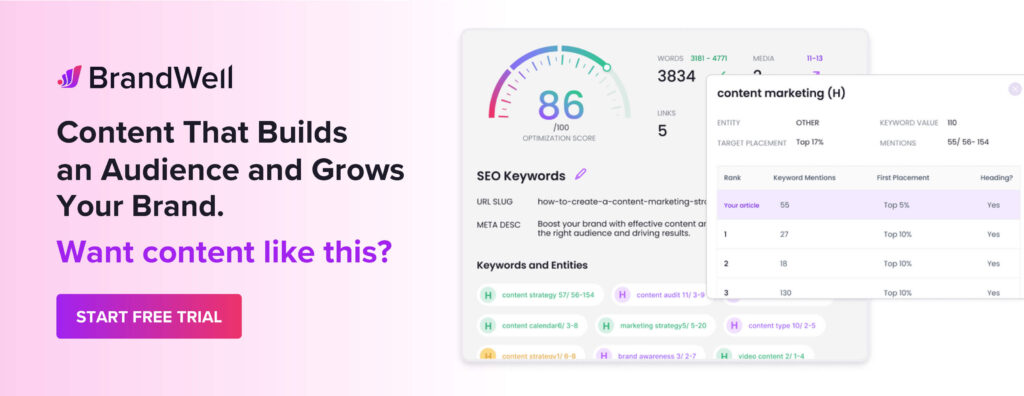Discover top guides, trends, tips and expertise from AIO Writers

Does your AI content sound too robotic? Like it came out of a college thesis? AI content can sometimes lull your readers to sleep, which is why as a modern marketer you need to learn how to refine AI-generated content before publishing it.
As of Capterra’s 2022 survey, only 33% of marketers are using AI for content creation. But that is expected to change with the explosion of AI writing tools — particularly ChatGPT.
As AI technology continues to advance, marketers can now create and publish content at an unprecedented speed. And while today’s AI-generated text sounds almost human-like, it does not necessarily meet the standards of great marketing copy.
Why? Because:
- AI has no emotion.
- AI lacks human creativity.
- AI does not have personal experiences.
- AI relies on pre-existing templates or patterns.
Therefore, AI cannot connect with human readers.
In this blog post, you will discover the challenges of generating AI content and learn how to refine it to make it more relatable to your audience.
Table Of Contents:
- Why Should You Refine AI Content?
- How to Refine AI-Generated Content
- Best Practices for Refining AI-Generated Content
- FAQs – How to Refine AI-Generated Content
- Conclusion
Why Should You Refine AI Content?
AI writing tools like ChatGPT do not know marketing or SEO. These writing assistants are just that — helpers — and they don’t have your knowledge as an experienced marketer.
In content marketing, quality always trumps quantity. So even if you have a hundred blog posts written by the machine, your marketing skills are what will transform these articles into persuasive pieces that will convince your readers to take action.
Learning how to optimize AI content has three benefits:
1. Increased Engagement with Target Audiences
High-quality content is essential for engaging your target audience effectively.
By refining AI-generated content to ensure readability, clarity, accuracy, and consistency, you can build stronger connections with your readers. This ultimately leads to increased website traffic, higher conversion rates on calls-to-action (CTAs), improved customer retention rates, and more social media shares.
2. Improved Brand Reputation and Credibility
Maintaining a consistent level of quality in your digital presence establishes trust with potential customers and improves your brand reputation.
Refining AI-generated content ensures that every piece published under your brand name meets high standards for professionalism while providing value to readers who seek information about products or services like yours.
A strong online reputation translates into increased consumer confidence, which can lead to better sales figures over time.
3. Higher Search Engine Ranking
Refining AI content means going over your SEO checklist and adding relevant keywords naturally throughout the text. This makes it easier for search engines to understand the context of your post and rank it higher in search results.
AI writers are so sophisticated that you no longer have to worry about grammar and spelling mistakes. What you can improve on, however, is readability. Break up long paragraphs, use idioms or colloquialisms, and make sure your AI-generated content is easy to read and understand — both for humans and search engines.
High-quality content attracts more backlinks from reputable websites within your industry or niche. These inbound links are a crucial factor in determining how well your site ranks on search engine results pages (SERPs).
How to Refine AI-Generated Content
The first step in refining AI content is to evaluate the quality of the draft written by your software. Look for issues like grammar mistakes, peculiar phrasing, ultra-long sentences (also called fluff), factual errors, and outdated data. You can use tools like Grammarly and Hemingway to spot these problems.
Improve Readability and Clarity
Look for jargon and technical terms that may confuse your audience and replace them with clear language written in short sentences. Break up text-heavy paragraphs into smaller sections using subheadings or bullet points where appropriate.
- Readability Tools: Utilize tools like Yoast SEO Readability Analysis or Readable.io.
- Simplify Language: Replace complex words with simpler alternatives when possible, using resources like Thesaurus.com or a paraphrasing tool.
- Formatting: Use headings, subheadings, bullet points, and numbered lists to break up content and make sections easier to digest.
Reading out loud can help identify any errors in grammar or syntax that you may have overlooked during the editing process. Doing this allows for a more thorough review of the content since mistakes tend to jump out when read out loud.
Hearing yourself say the words also helps determine if there are any awkward phrasings or sentences that don’t quite flow properly.
Check Names, Dates, and Numbers
The main purpose of using an AI tool is to generate copy quickly and efficiently. However, accuracy should never be sacrificed for speediness.
Always double-check all facts mentioned in the article — including dates, names, and numbers — and make sure everything adds up logically from start to finish without leaving any information gaps. This includes ensuring all sources are cited correctly where applicable too.
Check for Plagiarism
It’s important not only to verify originality but also to avoid potential legal issues by making sure no copyrighted material has been used in your article without permission from its rightful owner(s). Make it a habit to double-check manually just in case anything slipped through unnoticed.
Pro tip: BrandWell allows you to easily check for matches against other online sources through its proprietary Plagiarism Checker.
Ensure Accuracy and Consistency
Maintaining accuracy in your AI-generated content is crucial for establishing trust with your audience and improving your brand reputation. Verify facts by cross-referencing information from reliable sources such as industry reports or reputable news outlets. The last thing you want is a reader fact-checking you in the comments section!
Additionally, try to maintain a consistent tone, style, and article structure throughout the content.
- Factual verification: Cross-reference data with authoritative sources like government websites or well-established publications.
- Tone and style guides: Develop a comprehensive guide that outlines preferred language usage (e.g., active vs. passive voice), punctuation rules (e.g., Oxford comma), and capitalization preferences (e.g., title case vs sentence case for headings).
- Edit multiple times: Review the content multiple times during the refinement process to catch any inconsistencies that you may have missed.
Incorporate Human Feedback
Gathering user feedback plays an integral role in refining AI-created materials by offering unique perspectives on what constitutes high-quality versus low-value content. Encouraging engagement through comments or surveys can provide invaluable insights directly from those consuming your blog posts.
For instance, utilizing platforms such as Google Forms or SurveyMonkey enables straightforward collection of constructive criticism which could help improve your content in the future.
Incorporating these strategies into your refining process will help you create high-quality AI-generated content that effectively engages your target audience while enhancing search engine optimization performance.
Best Practices for Refining AI-Generated Content
No piece of content — whether human or AI-written — should go live on your blog or website without a check and polish from a human editor. AI can do a lot in terms of speed and language mastery, but it still can’t compete with the creativity, wisdom, and experience of a human writer.
Here are some of the best practices you should implement across all your content teams.
Establish Quality Standards and Guidelines
If you still don’t have one, now is the time to establish clear quality standards and guidelines for your content team. You can start by setting guidelines for the following:
- Tone of voice: Ensure consistency in tone across all pieces of content.
- Vocabulary: Define specific industry terms or jargon that should be used or avoided.
- Formatting: Set rules for headings, subheadings, bullet points, etc., to maintain uniformity throughout your website or blog.
- Citation: Specify when external sources must be cited and how they should be formatted within the text.
Develop an Automation Workflow Process
If you plan to adopt an AI model into your content production process, then you should develop an automation workflow process to keep everything organized.
You can use a project management software solution like Trello or Asana to assign and manage tasks. For your content strategy, we highly recommend creating an editorial calendar so that everyone on your team knows who is doing what and when to submit them.
If you’re using BrandWell to create long-form content, you can easily do keyword research, create content briefs, run topic reports, assign tasks to team members, and schedule blog posts right inside the app.
You’ll find all these tools on top of your projects:

After refining each AI-generated draft, your writer or editor can simply click on the status options and change it to Pending Editing, Schedule, or Publish so you can monitor which pieces are ready to go live.
While AI content generation offers speed and efficiency, publishing it unrefined can have detrimental effects. Unedited AI content can lack creativity, contain factual errors, or exhibit cultural insensitivity, potentially damaging your brand reputation and failing to resonate with your audience.
Refining AI-generated content with human expertise ensures accuracy, injects originality, and allows for cultural sensitivity checks. This vital step safeguards your brand’s image, strengthens audience connection, and ultimately leads to the creation of top-notch content that achieves its intended goals.
FAQs – How to Refine AI-Generated Content
How do you humanize AI-generated content?
To humanize AI-generated content, focus on improving readability and clarity by using a conversational tone. Incorporate storytelling elements and use relatable examples to make the content more engaging. Always include a final review by a skilled human editor to ensure it resonates with your target audience.
How to use AI to generate content?
Using AI to generate content involves selecting an appropriate tool or platform like OpenAI’s GPT-3 or BrandWell. Provide clear input prompts, such as keywords or topics, and let the AI create initial drafts. Refine the generated output through editing techniques to ensure accuracy, consistency, and adherence to quality standards.
Is it possible to identify AI-generated content?
Yes, identifying AI-generated content is possible through a close examination of language patterns and inconsistencies in context or logic. However, as algorithms improve over time, detecting such discrepancies becomes increasingly challenging. Some platforms help detect machine-written text based on linguistic characteristics.
Conclusion
Refining AI-generated content is a crucial step in publishing high-quality content that resonates with target audiences. In this article, we looked at the advantages of AI-generated content as well as the challenges of humanizing it.
By establishing quality standards and guidelines and developing an automation workflow process, you can ensure that your AI-generated content is accurate, consistent, and engaging.

UNLOCK YOUR POTENTIAL
Long Headline that highlights Value Proposition of Lead Magnet
Grab a front row seat to our video masterclasses, interviews, case studies, tutorials, and guides.



